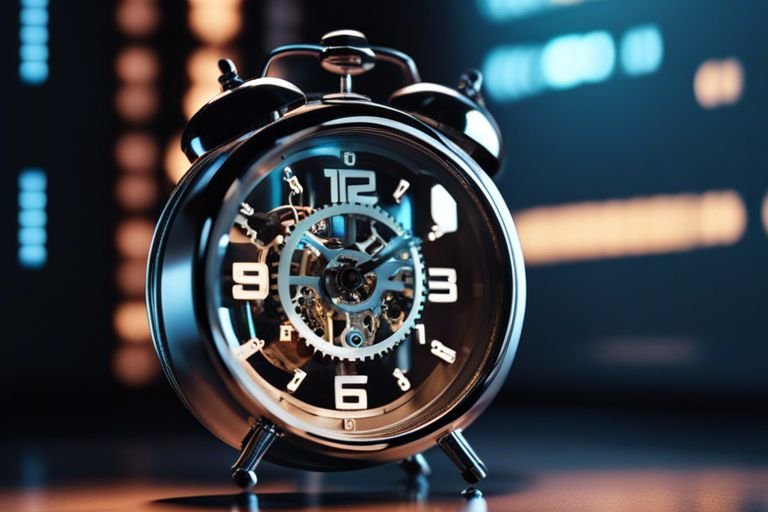Curious about the mystique of analog alarm clocks in today’s digital age? Many people still rely on these timeless devices to wake them up each morning, but have you ever wondered how they actually work? In this blog post, we will delve into the intricate inner workings of analog alarm clocks and explore why they still hold a special place in many people’s lives.
From the mechanical gears and levers to the soothing ticking sound, analog alarm clocks offer a unique experience that cannot be replicated by digital counterparts. Join us as we uncover the fascinating world of analog alarm clocks and learn why they continue to endure in the digital age.
Key Takeaways:
- Timekeeping Technology: Analog alarm clocks rely on mechanical gears and hands to display the time, while digital alarm clocks use electronic displays and quartz crystals for accuracy.
- Simplicity vs. Complexity: Analog alarm clocks offer a simple, traditional interface, while digital alarm clocks come with a variety of features such as multiple alarms, snooze buttons, and digital displays.
- Aesthetic Appeal: Analog alarm clocks are favored for their vintage and classic design, while digital alarm clocks are more modern and versatile in terms of design.
- Sound Mechanism: Analog alarm clocks produce a ticking sound, while digital alarm clocks use electronic beeping or music for alarm sounds.
- Resurgence of Analog: Despite the rise of digital technology, there is a growing trend of people embracing analog alarm clocks for their nostalgic and aesthetic value.

The Anatomy of an Analog Alarm Clock
Now, let’s take a closer look at the inner workings of an analog alarm clock. For a detailed guide on how to use an analog alarm clock, check out How to Use an Analog Alarm Clock.
Mechanical Movements
Mechanical movements power clock mechanisms in an analog alarm clock. This means that the clock’s hands are turned and the alarm is set off by a series of gears and springs. As the gears move at a steady pace, they drive the hour, minute, and second hands, keeping time with precision.
Bell and Hammer Mechanics
Mechanics behind the alarm feature of an analog alarm clock are typically simple yet effective. A small hammer attached to a spring is positioned inside the clock. When the alarm is set to go off, the hammer is released, striking the metal bell to create the familiar ringing sound. This mechanism has been a staple in alarm clocks for centuries, and it continues to be a reliable way to wake up in the morning.
To prevent the hammer from hitting the bell continuously, most analog alarm clocks have a mechanism that allows the user to stop the ringing by pressing a button. This simple yet effective design ensures that the alarm does its job without causing any danger or harm to the user.
The Inner Workings
While digital alarms have become the norm, there’s something enchanting about the analog clock. So, how does an analog alarm clock work?
The Gear Train
One of the key components of an analog alarm clock is the gear train. This intricate network of gears is responsible for the gradual release of tension from the mainspring, allowing the clock’s hands to move at a steady pace. The gear train also facilitates the relationship between the hour, minute, and second hands, ensuring that the time is accurately displayed.
The gear train is an essential part of the clock, as any misalignment or malfunction can lead to inaccurate timekeeping, which can be detrimental to the clock’s functionality.
Escapement and Oscillator
Oscillator
The escapement and oscillator work in tandem to regulate the movement of the gear train. The oscillator, typically a pendulum or balance wheel, sets the pace for the clock’s movement, while the escapement controls the release of energy from the gear train. This combination creates the distinct ticking sound of an analog alarm clock and ensures that the clock moves at a constant rate.
For instance, a malfunction in the escapement or oscillator can result in erratic timekeeping, causing the clock to run too fast or too slow, which can be detrimental to its accuracy.
Understanding the inner workings of an analog alarm clock gives us a deeper appreciation for the intricate engineering that goes into creating such a timeless timekeeping device.
While digital alarms have become the norm, there’s something enchanting about the analog clock. The gear train is an essential part of the clock, as any misalignment or malfunction can lead to inaccurate timekeeping, which can be detrimental to the clock’s functionality. For instance, a malfunction in the escapement or oscillator can result in erratic timekeeping, causing the clock to run too fast or too slow, which can be detrimental to its accuracy.
Setting and Sounding the Alarm
Your analog alarm clock comes with the feature of setting an alarm to wake you up at a specific time. You can adjust the time on the clock’s face using the small knob on the back or side of the clock. Once you have set the desired time, you can activate the alarm by pulling out the small lever on the clock’s face. The alarm will then sound at the set time, waking you up from your slumber.
The Alarm Mechanism Explained
Explained: The alarm mechanism in an analog alarm clock involves a series of gears and a hammer. When the set time arrives, the gears turn within the clock, which then causes the hammer to strike against a bell or chime, producing the characteristic ringing sound that wakes you up. This mechanical process repeats each day, ensuring that you are awakened at your chosen time.
Interaction Between User and Machine
On a daily basis, users interact with their analog alarm clocks by setting the alarm, adjusting the time, and activating or deactivating the alarm. By turning the knob to set the time and pulling the lever to activate the alarm, users engage directly with the clock’s inner mechanisms, effectively controlling when and how the alarm will function.
It allows for a sense of control and customization, with users being able to set the alarm at the exact time they desire, and having the tactile experience of physically engaging with the clock to make it work. However, misuse of the alarm settings or mishandling of the clock’s delicate internal components can lead to malfunction or damage.
Analog Alarm Clocks Today
Not only are analog alarm clocks still relevant in today’s digital age, they have also gained a resurgence in popularity. Many people are rediscovering the charm and functionality of these classic timepieces, making them a staple in modern homes and workplaces.
Niche Markets and Collectors
Clocks have become a sought-after item for niche markets and collectors. With their vintage appeal and timeless design, analog alarm clocks have become a symbol of nostalgia and authenticity. Collectors often seek out rare and unique models, adding to the mystique of these classic timepieces.
The Role in Modern Decor
On top of providing functionality, analog alarm clocks also play a significant role in modern decor. Their classic design and elegant craftsmanship add a touch of sophistication to any room. Whether it’s a vintage-inspired bedroom or a minimalist office space, these clocks bring a sense of timeless charm to the surroundings.
Analog alarm clocks are sought after by collectors and enthusiasts who appreciate the vintage appeal and timeless design of these classic timepieces. Their role in modern decor extends beyond functionality, serving as a sophisticated addition to any room.

Summing up
In conclusion, the analog alarm clock continues to maintain its mystique in the digital age due to its timeless and reliable mechanism. Despite the prevalence of digital devices, the analog alarm clock’s simple yet effective design still resonates with many people. Its mechanical nature, lack of reliance on electricity or batteries, and distinctive ticking sound contribute to its enduring appeal.
In an age of constant technological advancements, the analog alarm clock serves as a reminder of the beauty and functionality of traditional timekeeping. As we continue to appreciate the nostalgia and practicality of analog devices, the analog alarm clock remains a cherished and dependable fixture in many households.
Analog Alarm Mystique – How Does an Analog Alarm Clock Work in the Digital Age?
Q: What is an analog alarm clock?
A: An analog alarm clock is a traditional timepiece that uses mechanical mechanisms to display the time and set alarms. It operates without the use of digital technology, relying on gears, cogs, and spring mechanisms to function.
Q: How does an analog alarm clock work?
A: An analog alarm clock works by using a mainspring to power the clock’s movement. As the spring unwinds, it turns gears that move the clock’s hands. When the set alarm time is reached, a hammer strikes a bell, creating the familiar ringing sound to wake you up.
Q: Why would someone choose an analog alarm clock over a digital one?
A: Some people prefer the simplicity and reliability of an analog alarm clock. It does not require electricity or batteries to function, making it a reliable timekeeping option, especially in the event of power outages. Additionally, the classic design and nostalgic feel of an analog alarm clock appeal to many individuals.
Q: Are analog alarm clocks accurate?
A: Analog alarm clocks can be accurate if well-maintained. However, they may lose a few minutes over time due to the mechanical nature of their movement. Regular winding and occasional maintenance can help keep an analog alarm clock running accurately.
Q: Can an analog alarm clock be used alongside digital devices?
A: Yes, an analog alarm clock can complement digital devices in the digital age. It can serve as a reliable backup in case of power outages or as a charming addition to a bedside table. Some people also appreciate the peaceful ticking sound of an analog clock amidst the sea of digital noises.

